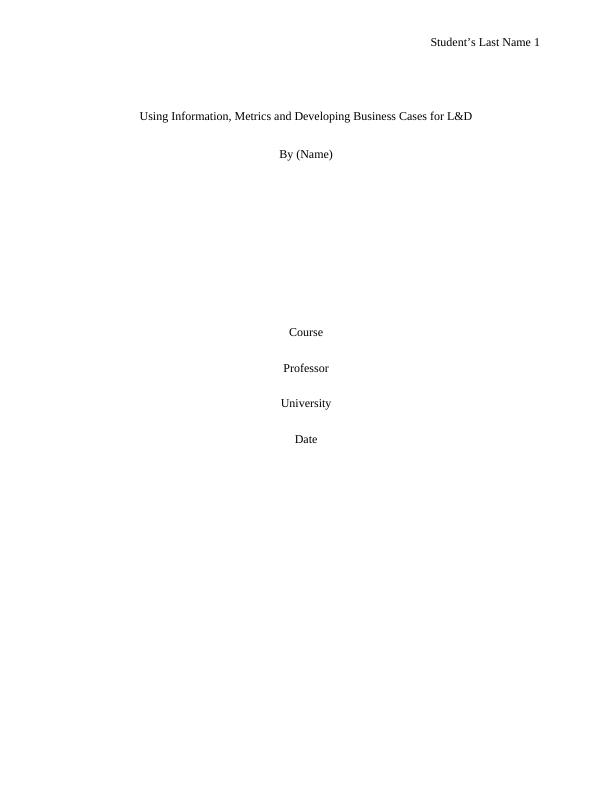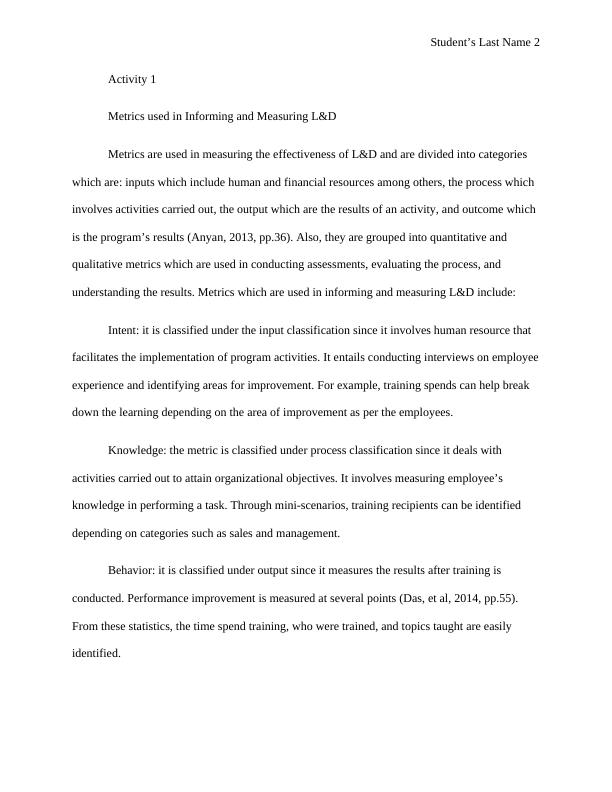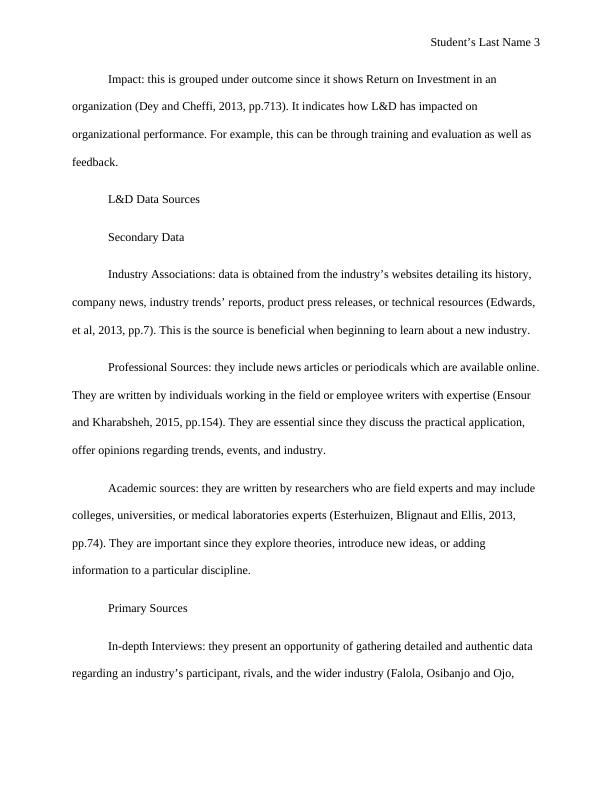Using Information, Metrics and Developing Business Cases for L&D
Produce a written response identifying examples of metrics used to inform and measure L&D, and evaluate a range of primary and secondary L&D data sources. Undertake research in an area of L&D and write a business report for stakeholders, providing a rationale, explaining data collection and analysis, drawing conclusions and making recommendations, and summarizing limitations of the research.
Added on 2023-06-10
About This Document
Using Information, Metrics and Developing Business Cases for L&D
Produce a written response identifying examples of metrics used to inform and measure L&D, and evaluate a range of primary and secondary L&D data sources. Undertake research in an area of L&D and write a business report for stakeholders, providing a rationale, explaining data collection and analysis, drawing conclusions and making recommendations, and summarizing limitations of the research.
Added on 2023-06-10
End of preview
Want to access all the pages? Upload your documents or become a member.




